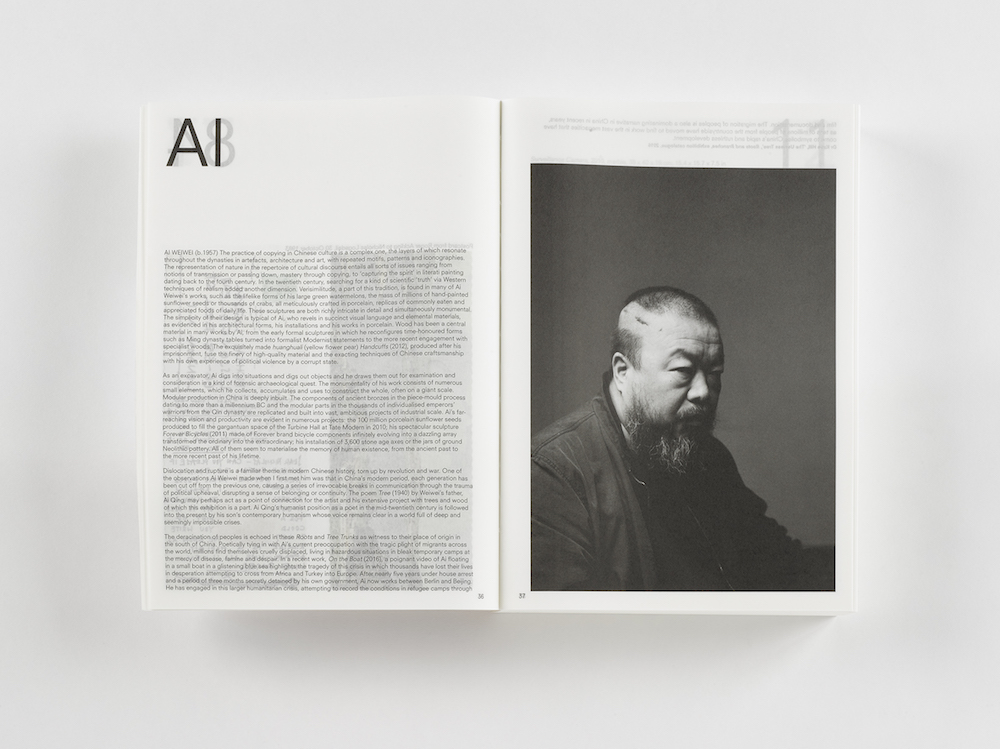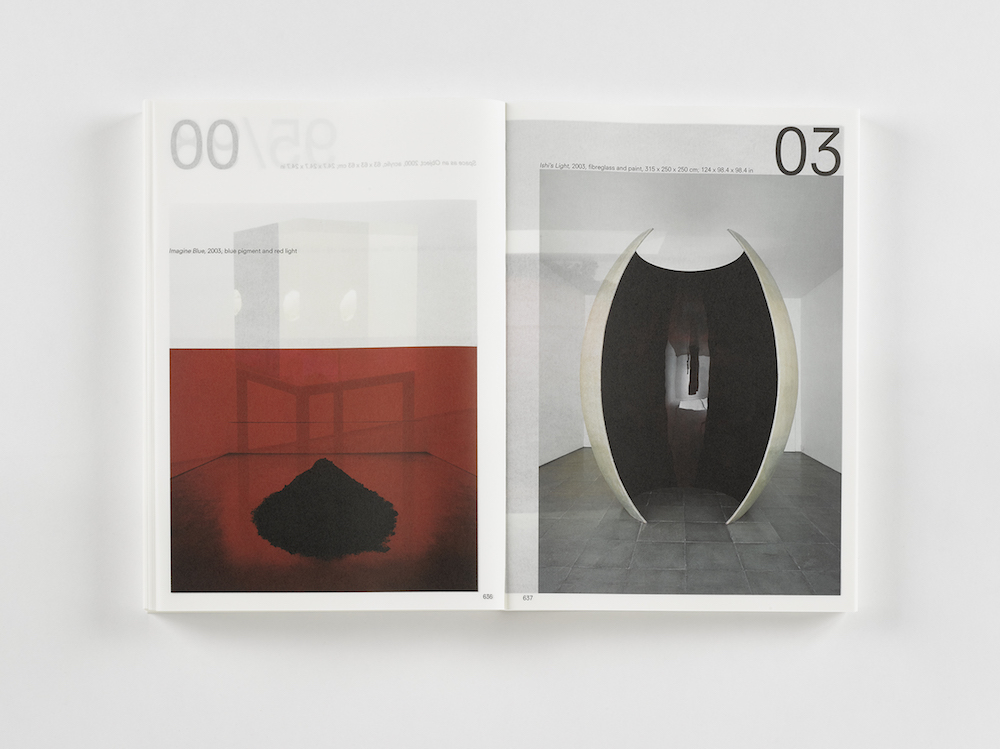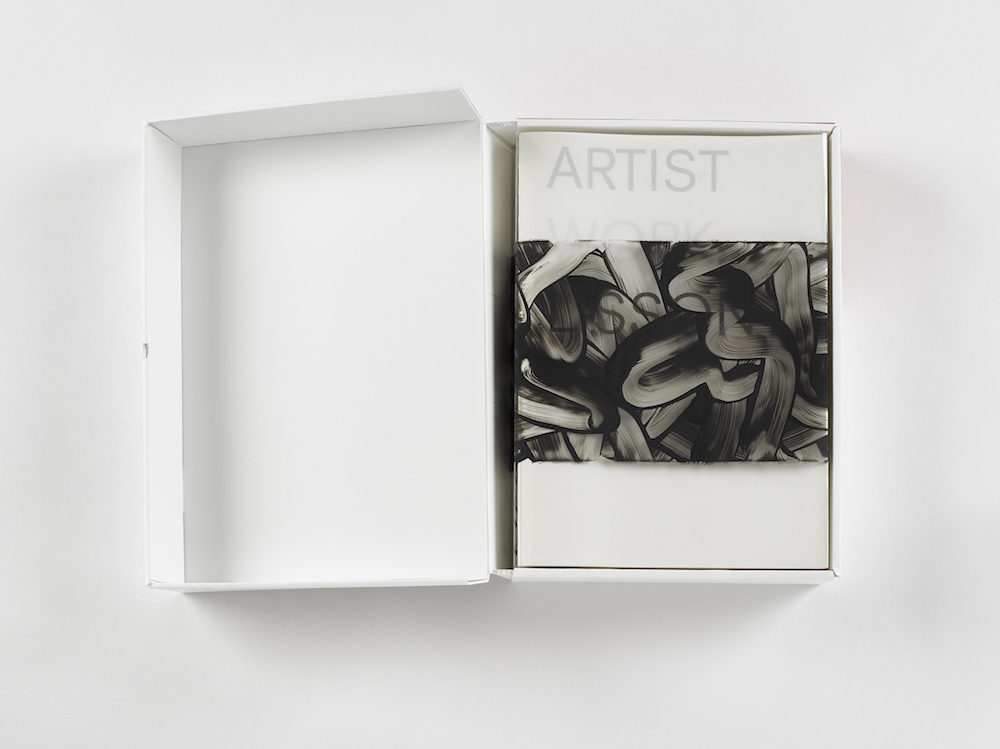
The standout publication in Artissima’s book section this week was a weighty 50th-anniversary book from well-known London gallery, Lisson: Artist | Work | Lisson. Immensely thorough, the book runs through every artist who has ever had an exhibition at the gallery. Including firm fixtures and other surprise or forgotten exhibitors, from Andy Warhol to Joyce Pesanto and Marina Abramović, the book discusses the shows that Lisson has hosted over the years, with details from the archive that add a sense of colour and familiarity to many artists whose works we know very well, but who we know less about as people. The book is over one thousand delicate pages long (I would know, I was shooed away from leafing through said delicate pages by a concerned booth manager at Artissima) and has been designed by the renowned Dutch designer Irma Boom.

“Working with Irma Boom on the 50th-anniversary project was like having the input of an artist, rather than a designer,” Lisson’s head of content, Ossian Ward tells me. “We worked intensely on a conceptual and rigorous design that still allowed for some play, especially in the acetate cover that has meant all of our artists can contribute their own limited edition—some handmade, some digital.”
Of the production, Ward explained, “we also pushed the limits of what was possible in bookmaking, using Irma’s own paper IBO, which is beautiful archival paper to match the documentary nature of the content. The thinness of the paper lets readers glimpse other elements through the pages, which Irma said is like seeing the past, present and future all at the same time.”

I saw an unfinished version of the book a few months back on a visit to Lisson’s sprawling archive, where I had the chance to look through some of the pieces held within it. One aspect that was evident during that visit and that is again throughout the book is the changing nature of communication in the art world over the years; the paper trail inevitably lessens as the years go on, as physical letters are replaced by digital messages. It’s exciting to see hand-written notes, exhibition plans and layouts, some of which would have felt entirely throwaway in their time—postcards sent often to the gallery’s founder Nicholas Logsdail, a close friend of many of the artists featured, to inform him of small practicalities such as flight bookings and arrival times—and carefully crafted letters, full of wit and tales of family life, all reproduced in the book. Creating the book required the gallery to look not only over their extensive history but also to scour through hundreds of boxes of archive material to piece together a rich narrative of the gallery’s life to date.

The Lisson being one of the major players of the London gallery scene, it is intriguing to delve into its beginnings. Although the story of Lisson is fairly well-known, many of its initial collaborators are now so successful in their own right that it’s easy to forget none of them started out as a sure thing. The Lisson was founded in a different postcode to London’s usual gallery stomping grounds and called on many of Logsdail’s existing personal contacts, who were just starting out, for shows. The alphabetical ordering of the book means that these stories are woven together, as we see the development of the gallery and the changing face of the art world moving back and forth in time—the vibrant nineties aesthetic of YBA Mat Collishaw flowing into the grainy sixties and seventies photographs and letters of Roy Colmer and Kenelm Cox, for example.
There are also more than two thousand illustrations in the book, critical texts accompanying each artist, and essays from the gallery’s core team, including Logsdail, Ward and Lisson’s curatorial director Greg Hilty. Daniel Buren, a regular at the gallery since the 1970s (and currently showing at the gallery, to commemorate the 50th anniversary) designed the cover. A book about a gallery could potentially end up being something that is only of interest to the gallery itself, but this manages to create such a characterful and rigorous exploration of its artists and history that it ends up commenting on far more than itself; from the metamorphic nature of the art world to the evolution of written communication.

Artist | Work | Lisson is out now
lissongallery.com
All images from Artist | Work | Lisson, courtesy Lisson Gallery, London





